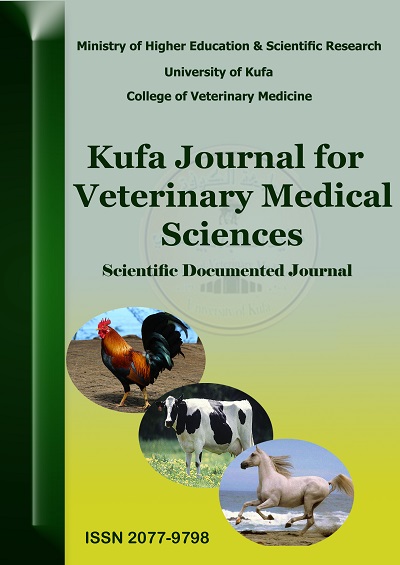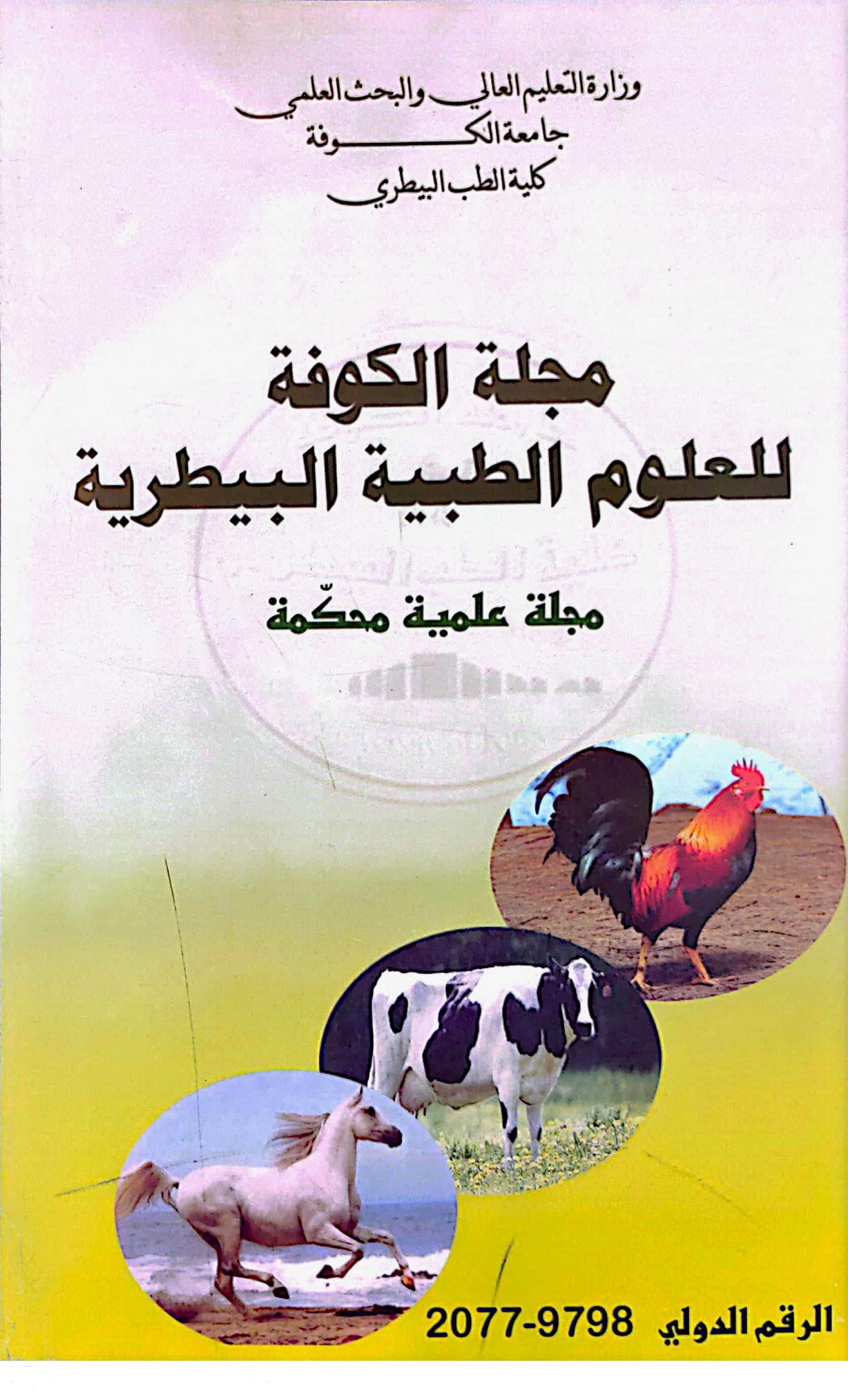The effect of black currant selenium nanoparticles on dyslipidemia and oxidant- antioxidant status in D- galactose treated rats
DOI:
https://doi.org/10.36326/kjvs/2020/v11i13300Keywords:
D-galactose, glutathione peroxidase, lipid profile, Selenium nanoparticlesAbstract
The current study was aimed to explore the effect of black currant selenium nanoparticles (BCSeNPs)on serum lipid profile and oxidant- antioxidant state markers in blood of D- galactose(D-gal) treated rats. The green synthesis of SeNPs as described earlier in our previous study was characterized by color changes; Ultraviolet- visible (UV–VIS) spectroscopy; scanning electron microscopy (SEM) techniques; X–ray diffraction analysis (XRD); Fourier transform infrared spectroscopy (FTIR). The results revealed prevalence of brick- red color of BCSeNPs characterized by spherical crystals with average particle size in the range of 18-50 nm. Thirty-two (32) adult male rats were divided randomly and equally into four experimental groups (8/group) and handles as follows for eight weeks: Control (C) group: rats in this group were treated with intra peritoneal injection (i.p) and oral intubation of normal saline. T1 group: animals in this group were subjected to i.p. of D gal a dose (150 mg/kg/day), which was dissolved in normal saline solution. T2 group: the rats were oral intubation BCSeNPs (1mg/Kg. B. W). T3 group: rats in this group were administered BCSeNPs concurrently with i.p. of D-gal in the same previous doses. Blood samples were collected from heart by cardio puncture technique at 2nd and 8th weeks of the experiment and serum samples were used for estimation of some biochemical parameters related to oxidant-antioxidant status markers: Malondialdehyde (MDA) and Total antioxidant capacity (TAO-C); Serum lipid profile: concentration of total cholesterol(TC), triglyceride(TAG), high density lipoprotein- cholesterol(HDL-c), low density lipoprotein- cholesterol (LDL-c), and very low density lipoprotein- cholesterol(VLDL-c). At the end of experiment, after animal scarifying, section from liver was taken for detection of gene expression of glutathione peroxidase. The results of here in study confirmed a case the oxidative stress and hyperlipidemia in T1 group manifested by significant depression in serum TAO-C concentration and decrease in glutathione peroxidase gene expression level. While, caused elevation in serum MDA concentration and significant decrease in serum concentration of HDL-c with significant elevation in serum concentration of TAG, VLDL-C, TC, and LDL-c. At the end of experiment, BCSeNPs intubation in T2 group caused alleviation of previous mentioned parameters related to oxidative stress and lipid profile. On conclusion, the result in a current study showed that black currant selenium nanoparticle has both a preventive and a therapeutic role in D-gal toxicity in adult male rats, where BCSeNPs can be considered as antioxidant and hypolipidemic agent.Downloads
Download data is not yet available.
Downloads
Published
2020-06-30
How to Cite
Al-Kurdy, M. J. J. ., & khudair, K. K. . (2020). The effect of black currant selenium nanoparticles on dyslipidemia and oxidant- antioxidant status in D- galactose treated rats. Kufa Journal For Veterinary Medical Sciences, 11(1), 23–38. https://doi.org/10.36326/kjvs/2020/v11i13300
Issue
Section
Articles
License
Copyright (c) 2020 Masar Jabbar Jary Al-Kurdy, Khalisa Khadim khudair

This work is licensed under a Creative Commons Attribution 4.0 International License.













